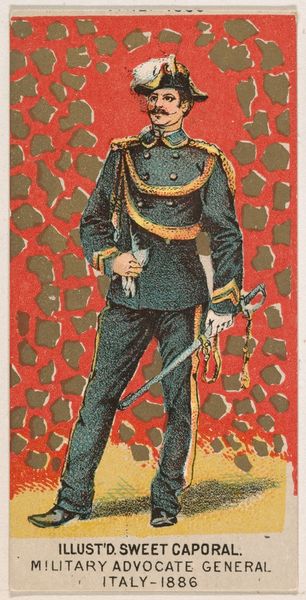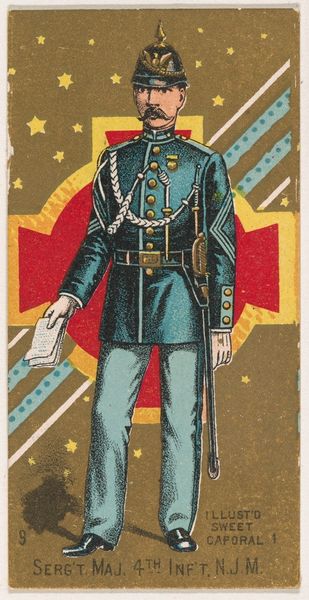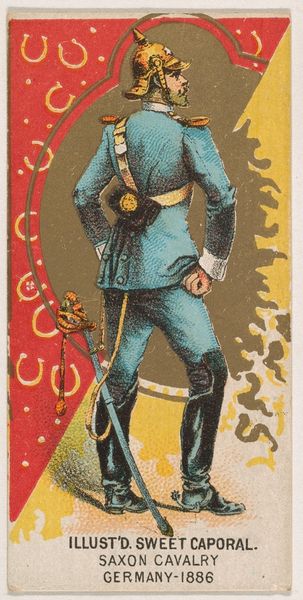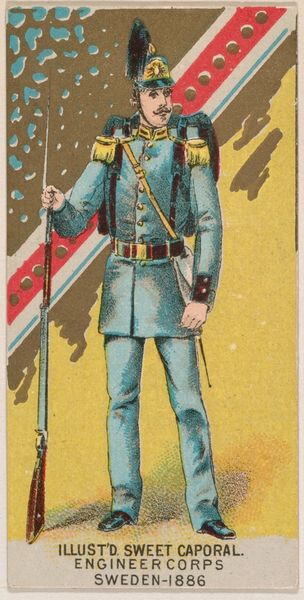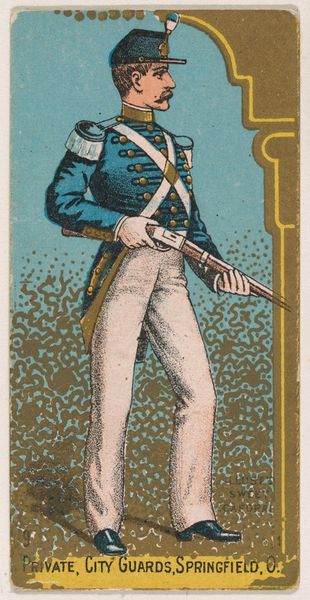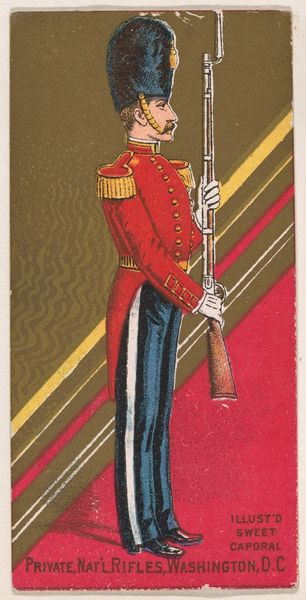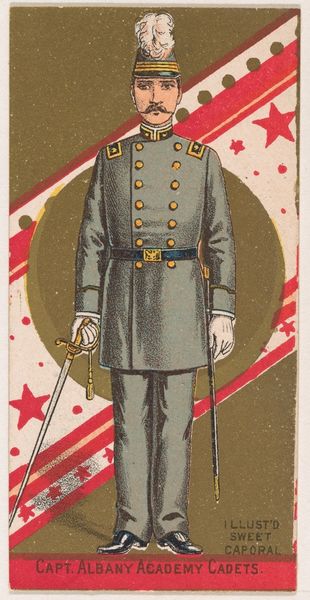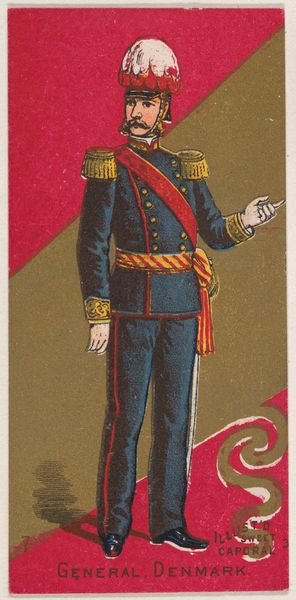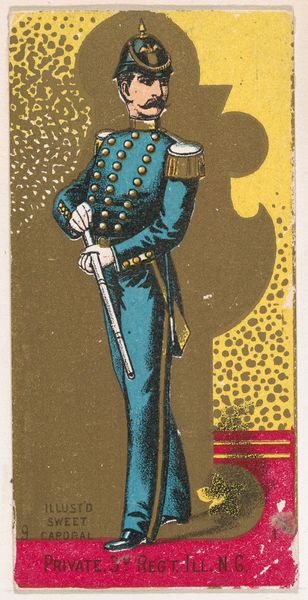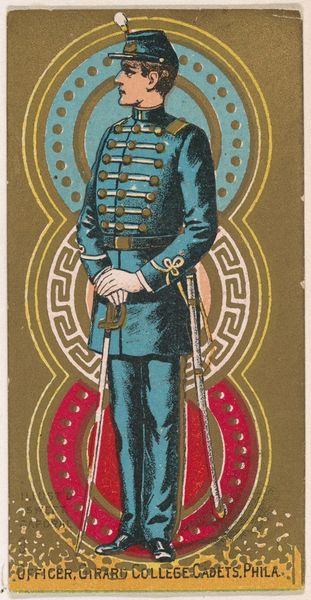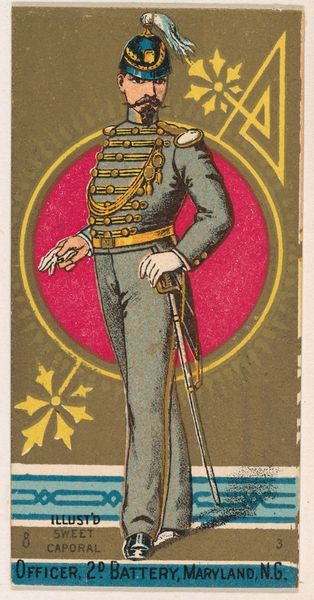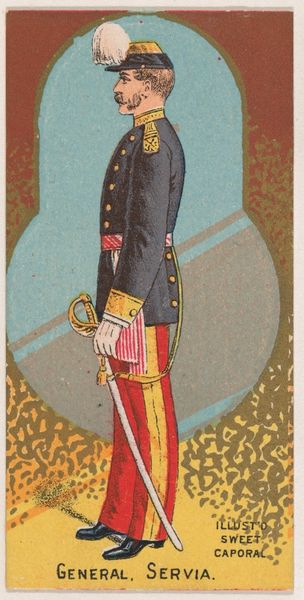
Officer of Artillery, Portugal, from the Military Series (N224) issued by Kinney Tobacco Company to promote Sweet Caporal Cigarettes 1888
0:00
0:00
Dimensions: Sheet: 2 3/4 × 1 1/2 in. (7 × 3.8 cm)
Copyright: Public Domain
Curator: I find myself immediately drawn to the texture and coloration within this small piece. Editor: Indeed. We’re looking at an 1888 print titled "Officer of Artillery, Portugal, from the Military Series (N224)" by Kinney Tobacco Company, originally created to promote Sweet Caporal Cigarettes. It is currently held at the Metropolitan Museum of Art. Curator: A tobacco advertisement. The layers of societal messaging are immediately apparent, aren’t they? The military figure, symbolic of power and order, used to endorse a product. One immediately considers how military figures get commodified for various purposes across historical and geographical contexts. Editor: Quite so. The composition certainly utilizes interesting, almost flattened perspectives. Note the subject’s erect posture. There’s an attention to line, shape, and especially the palette; the blues and reds of the uniform juxtapose starkly with the earthy, yellowed ground and sky, giving it a graphic boldness. Curator: Absolutely, and considering this was during a period of increasing imperialism and nationalism, what statements, subtle or not, does its use of a Portuguese officer convey about notions of trade, global dominance, or cultural exchange? I also wonder about the audience's potential interpretation during that time period, given that the US tobacco market in the late 19th century was enmeshed within complex economic and racial dynamics rooted in legacies of enslavement and agriculture in the US South. Editor: An important point. The details of the uniform itself bear examination. Observe the trim, the buttons, the cord—each element rendering the form itself—it's the specific shade of blue that sets it apart for me. Then, to step away from semiotics and historical narrative for a second, can we reflect on the medium and process itself? This drawing in print represents a time when consumer art had a direct connection to daily lives in a way that digital advertisements simply do not have today. Curator: Precisely. I agree completely. Editor: In summary, viewing the Portuguese officer, it appears to offer an opportunity to dissect historical visual rhetoric, social hierarchies, and materiality. Curator: A necessary reminder to situate visual forms within histories of production, identity, and power.
Comments
No comments
Be the first to comment and join the conversation on the ultimate creative platform.
